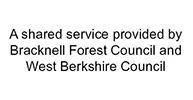Keeping Your Home Free from Damp and Mould
What causes condensation?
Condensation is caused by moisture in the air and mainly occurs during the winter when the weather is colder. The average family adds two gallons of extra water to the air in their home every day, through cooking, bathing and drying clothes inside. When the warm moist air comes into contact with colder air moisture is released as tiny droplets of water. You will often see these on cold surfaces like mirrors and windows, this is condensation.
Is it condensation?
Condensation is not the only cause of damp. It can also come from:
• Leaking pipes, wastes or overflows
• Rain seeping through the roof where a tile or slate is missing, spilling from a blocked gutter, penetrating around window frames, or leaking through a cracked pipe
• Rising damp due to a defective damp-course or because there is no damp-course
These causes of damp often leave a ‘tidemark’. If your home is newly built it may be damp because the water used during its construction (for example, in plaster) is still drying out. If your home is damp for any of these reasons it may take weeks of heating and ventilation to dry out. Hiring a dehumidifier will help. If you do not think the damp comes from any of these causes, then it is probably condensation.
How does condensation cause mould?
If you don’t get rid of moisture if will encourage the growth of mould. Mould is a fungus and grows wherever there is moisture. You will see black pinpricks of mould on walls and ceilings. You will also notice a musty smell and items in cupboards can get covered in green fur. Damp and mould increase the risk of mites and can cause respiratory problems if it remains untreated.
What can I do to reduce condensation?
If you reduce the amount of moisture that goes into the air in you home, you will reduce the amount of condensation that builds up.
You can do this by following a few simple steps:
• Open windows and vents as much as possible to reduce moisture build up
• Try not to put to much stuff into cupboards as this reduces air circulation
• Leave space between furniture and walls to allow air to circulate
• Keep your home warm. In cold weather it is better to keep your home heated throughout the day at a low level, than to turn the heating on high for short bursts
• Avoid using tumble dryers which aren’t externally vented
• If possible, dry clothes outside. If you have to dry them indoors then make sure you leave a window open
• When cooking, open windows or use an extractor fan
• Keep a lid on saucepans and don’t let the kettle over boil
• Don’t use portable gas or paraffin heaters
• Close kitchen and bathroom doors to prevent moisture reaching other rooms
• Install humidistat controlled extraction where possible and leave fans running for 20 min after use
What should I do if I see condensation or mould in my home?
The most important thing to do is to remove it.
• If condensation occurs, dry the windows and sills with paper towels and dispose of these
• Remove and kill mould by wiping down surfaces with a fungicidal wash or dilute bleach weekly
• When decorating, use an anti-fungi paint to help prevent mould from appearing again.
• Don’t brush or vacuum the mould as this can increase the amount of mould spores in the air
• Clean and remove excess moisture and mould spores from carpets and clothing.
Insulate, draughtproof and heat your home
Insulation and draughtproofing will help keep your home warm and will also cut fuel bills. When the whole home is warmer, condensation is less likely.
• Insulate your loft. Remember to draughtproof the loft hatch but do not block the opening under the eaves.
• Consider cavity wall insulation. Before deciding though, you should talk to your local building inspector as building regulations approval may be required.
• Consider secondary and double glazing of windows to reduce heat loss and draughts but you must ensure that there is some ventilation, trickle vents can be installed
• In cold weather, keep low background heating on all day, even when there is no one at home. to maintain the structural heat.
Some words of warning:
• Do not block permanent ventilators
• Do not completely block chimneys. Instead, leave a hole about two bricks in size and fit a louvered grille over it
• Do not draughtproof rooms where there is condensation or mould
• Do not draughtproof a room where there is a cooker or a fuel burning heater, for example, a gas fire
• Do not draughtproof windows in the bathroom and kitchen
If you require this information in an alternative format or translation, please call 01635 551111 and ask for Environmental Health and Licensing.
Bracknell Forest Council
Environmental Health and Licensing
Time Square,
Market Street, Bracknell, RG12 1JD
Telephone: 01344 352 000
e-mail: environmental.health@bracknell-forest.gov.uk
West Berkshire Council:
Environmental Health and Licensing
Market Street
Newbury
Berkshire
RG14 5LD
Telephone: 01635 503242
email: ehadvice@westberks.gov.uk
Wokingham Council:
Environmental Health and Licensing
Shute End
Wokingham
Berkshire
RG40 1BN
Telephone: 0118 974 6000
email: environmental.health@wokingham.gov.uk
www.westberks.gov.uk




